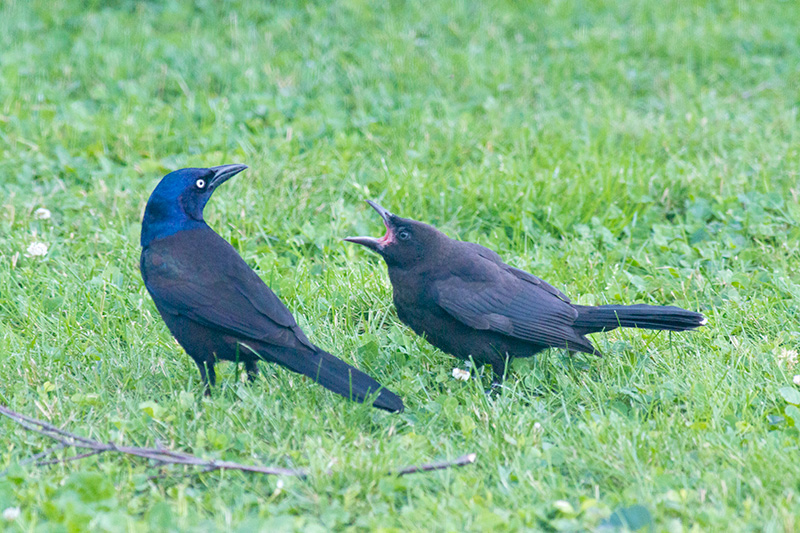June is Nesting Season for Birds
6/14/15
By David Brown
For birders, May is the most active month due to the large number of migrating birds, especially the warblers. By June, the chance of rare migrants showing up has decreased and many birders are simply burned out. Although June may be boring for getting new birds on your list, it is exciting because it is the nesting season. Although overall participation in citizen-science projects such as eBird are down during the summer months, multiple programs monitor and track breeding birds.
The United States Geological Survey's Patuxent Wildlife Research Center and Canadian Wildlife Service's National Wildlife Research Center coordinate the North American Breeding Bird Survey. Along each BBS route, a volunteer makes fifty stops at half-mile intervals. At each stop, he spends three minutes counting all the birds that he sees or hears. In Canada and the United States there are over 4100 BBS routes conducted each year. The same volunteer does the same route each year following strict guidelines so changes in breeding bird populations can be scientifically recorded over time.
Pennsylvania has also had two breeding bird atlases published, with the second one covering the years 2004 to 2009. These atlases use data from thousands of volunteers and provide the most comprehensive analysis of the status of each species of bird that breeds in Pennsylvania.
Amateur birders are able to make significant contributions especially at the local level. This past winter, pine siskins showed up at local feeders in large numbers. Are any nesting locally this summer? White-throated sparrows are a species that is usually seen here in the winter, but small numbers have been found breeding at high elevations in northern Lycoming County in the past. Are they nesting in the county this year? Even beginners can help answer these questions by looking and listening while out hiking.
Nesting leads to baby birds. If you come across a young bird on the ground the best thing to do is usually to leave it alone. It is not unusual for birds to leave the nest before they are able to fly. If the bird seems especially young and is in a dangerous situation it is okay to help it get to safety. It is a myth that the parents will abandon a baby bird if a human touches it.

Juvenile Common Grackle with an adult
One may wonder how the appearance of young birds change over time. A bird's first set of non-downy feathers is known as its juvenile plumage. Some species, such as American robins, European starlings and cedar waxwings, are only in juvenile plumage for the first summer and then molt into an adult-like plumage in the fall. This is why we do not see juveniles of these species in the winter. Other species, especially raptors such as red-tailed hawks and bald eagles, stay in juvenile plumage for a little over a year. As an example, bald eagles have a white downy plumage when they are first hatched, but as they grow in the nest they obtain a very dark brown juvenile plumage. The following summer they will begin to replace these feathers and be considered a sub-adult rather than a juvenile.
Have fun looking at the birds in your yard this summer and see if you can find any juveniles.